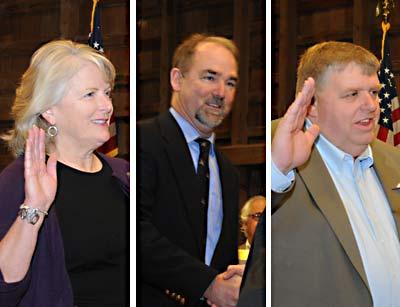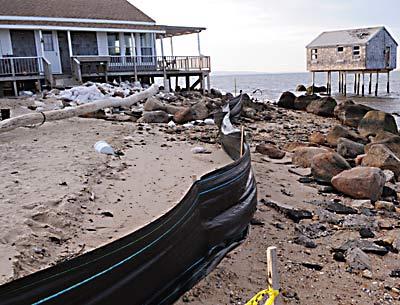Government Briefs 1.26.12
Government Briefs 1.26.12
East Hampton Town
Going Private at Terry King
The town tennis courts at the Terry King recreational area on Abraham’s Path in Amagansett could become the next facility to be handed to a private entity to operate, as the town board agreed last week to issue a request for proposals from potential operators.
Operation of the adjacent enclosed roller hockey rink has already been privatized, with Sportime, a company that runs a nearby camp, now in charge of the facility. A public tennis court in Montauk is also being operated by an outside company, and the board will this week receive proposals from companies interested in running the scavenger waste facility.
The Terry King tennis courts are in need of work, and the specifications for proposals, which are available at the Purchasing Department, call for bidders to do the renovations. Proposals must be submitted by 3 p.m. on Feb. 16.
Intersection Redo
After hearing from the town police chief, highway superintendent, and town engineer, the town board approved a proposal to change the traffic pattern at the intersection of Accabonac Road and Abraham’s Path in East Hampton, requiring traffic on Accabonac Road to come to a stop at the corner, and allowing drivers on Abraham’s Path to continue through the intersection without stopping.
At present, drivers going north and south on Abraham’s Path encounter a stop sign, while those on Accabonac are not required to stop at the intersection. There have been 23 accidents at that spot in the last 10 years — “not a lot” according to Tom Talmage, the engineer — but traffic along Abraham’s Path has increased, perhaps because of trucks being rerouted as a result of limitations enacted by East Hampton Village. To allow drivers to become accustomed to the new rules, new stop signs will be put up with the old ones kept in place until the fall, making a four-way stop.
Also according to a vote last week, stop signs will be placed at South Elmwood Avenue in Montauk for traffic heading east-northeast, and at South Edgemere Street, affecting those bound west-southwest.
New Charity Committee
Councilwoman Theresa Quigley got the go-ahead from the rest of the town board to form a charity committee charged with discussing ways the town can help private nonprofits. Annual grants to some groups have been cut virtually completely out of the town budget, but, Ms. Quigley said, “When money runs dry, there are other ways we can support them” — helping disparate groups coordinate to share services or space, for instance.
Expediting Solar Panels
After a hearing last Thursday night that drew no speakers, the board passed a local law allowing for expedited review and permitting of the installation of rooftop solar panels on residential buildings. Councilman Dominick Stanzione has been working in conjunction with the county and members of other municipalities on uniform laws for solar installations, and the law is a result of that process.
Under the new criteria, building permits can be issued at no cost for solar equipment that does not require architectural review board approval, is flush-mounted no more than six inches above the roof, and meets other specific criteria. The equipment must be installed by a certified installer using approved materials. Permits must be issued within 14 days of a complete application.
In addition, the Building Department will maintain a list of solar installations, and the addresses at which they are placed will be shared with emergency responders. Signs indicating that a solar-electric system is operating must be placed on site, with utility meters and disconnect switches marked.
Another law approved by the board last Thursday after a hearing with no speakers provides for the concurrent processing of site plan applications by the planning board and the architectural review board, “in order to increase efficiency,” according to the resolution.
STAR Exemption Deadline
March 1 is the deadline for applications for property tax exemptions such as the School Tax Assessment Relief, or STAR, exemption, and those offered to senior citizens, veterans, and people with disabilities or limited incomes. Application forms and additional information can be obtained from the East Hampton Town Tax Assessors’ office and must be submitted to that office.
In East Hampton, households with less than $500,000 in annual income are eligible for the basic STAR exemption. Those who have already applied do not need to reapply each year. Annual renewal is required, however, for a senior-citizen exemption offered to those 65 or older with gross earnings of less than $37,400 a year and for the enhanced STAR program, which provides a tax exemption for those over 65 with an annual adjusted gross income of $79,050 or less.



